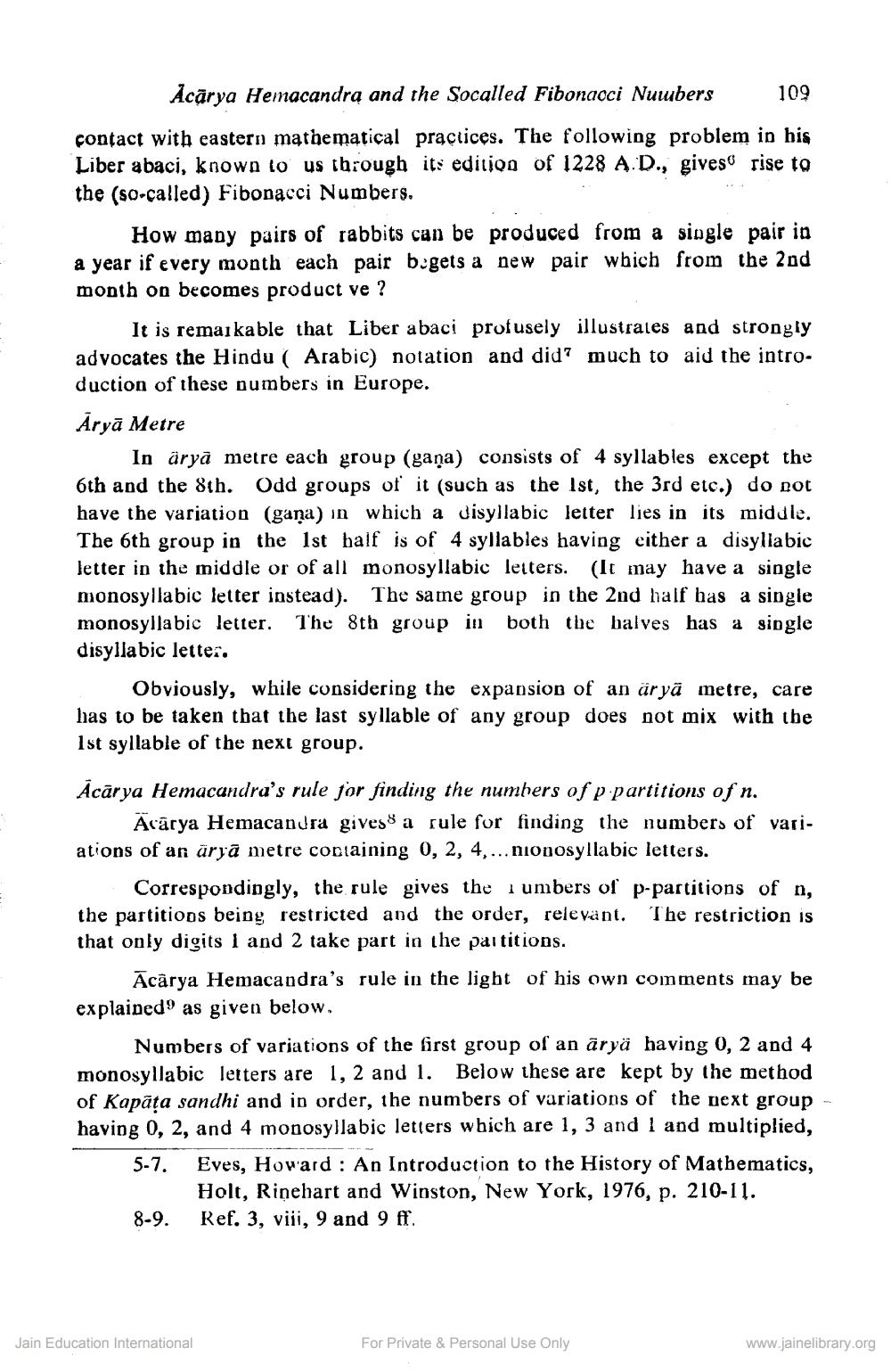________________
Acārya Hemacandra and the Socalled Fibonacci Numbers
109
contact with eastern mathematical practices. The following problem in his Liber abaci, known to us through its edition of 1228 A.D., gives rise to the (so-called Fibonacci Numbers.
How many pairs of rabbits can be produced from a single pair in a year if every month each pair bugets a new pair which from the 2nd month on becomes product ve ?
It is remarkable that Liber abaci profusely illustrates and strongly advocates the Hindu ( Arabic) notation and did much to aid the introduction of these numbers in Europe. Āryā Metre
In äryä metre each group (gana) consists of 4 syllables except the 6th and the 8th. Odd groups of it (such as the Ist, the 3rd etc.) do not have the variation (gana) in which a disyllabic letter lies in its middle. The 6th group in the 1st half is of 4 syllables having either a disyllabic letter in the middle or of all monosyllabic letters. (It may have a single monosyllabic letter instead). The same group in the 2nd half has a single monosyllabic letter. The 8th group in both the balves has a single disyllabic letter.
Obviously, while considering the expansion of an äryä metre, care has to be taken that the last syllable of any group does not mix with ibe Ist syllable of the next group.
Ācārya Hemacandra's rule for finding the numbers of p partitions of n.
Acārya Hemacandra gives a rule for finding the numbers of variations of an āryā metre containing 0, 2, 4,... nionosyllabic letters.
Correspondingly, the rule gives the lumbers of p-partitions of n, the partitions being restricted and the order, relevant. The restriction is that only digits 1 and 2 take part in the partitions.
Acārya Hemacandra's rule in the light of his own comments may be explained as given below.
Numbers of variations of the first group of an äryä having 0, 2 and 4 monosyllabic letters are 1, 2 and 1. Below these are kept by the method of Kapāta sandhi and in order, the numbers of variations of the next group -- having 0, 2, and 4 monosyllabic letters which are 1, 3 and I and multiplied, 5-7. Eves, Howard : An Introduction to the History of Mathematics,
Holt, Rinehart and Winston, New York, 1976, p. 210-11. 8-9. Ref. 3, viii, 9 and 9 ff.
Jain Education International
For Private & Personal Use Only
www.jainelibrary.org




